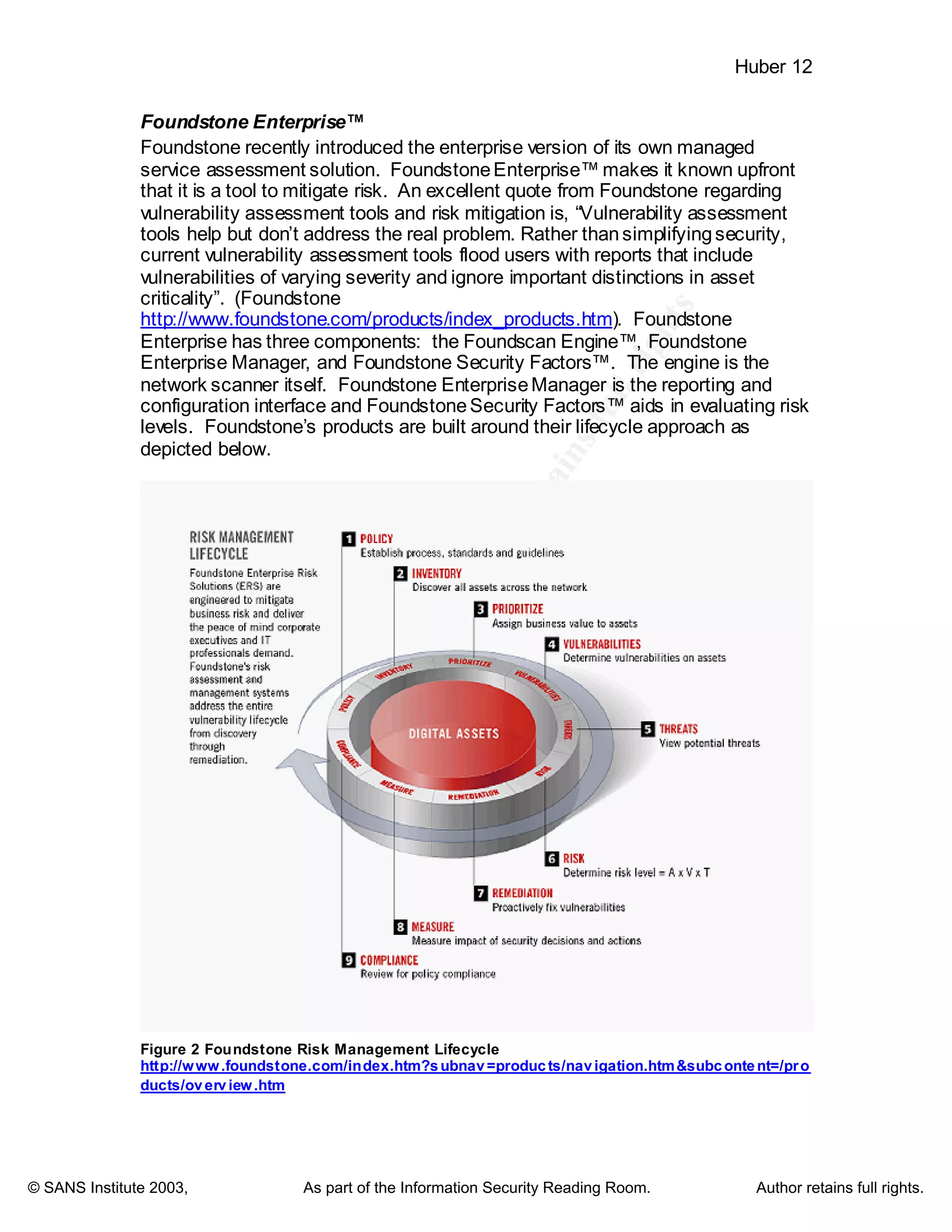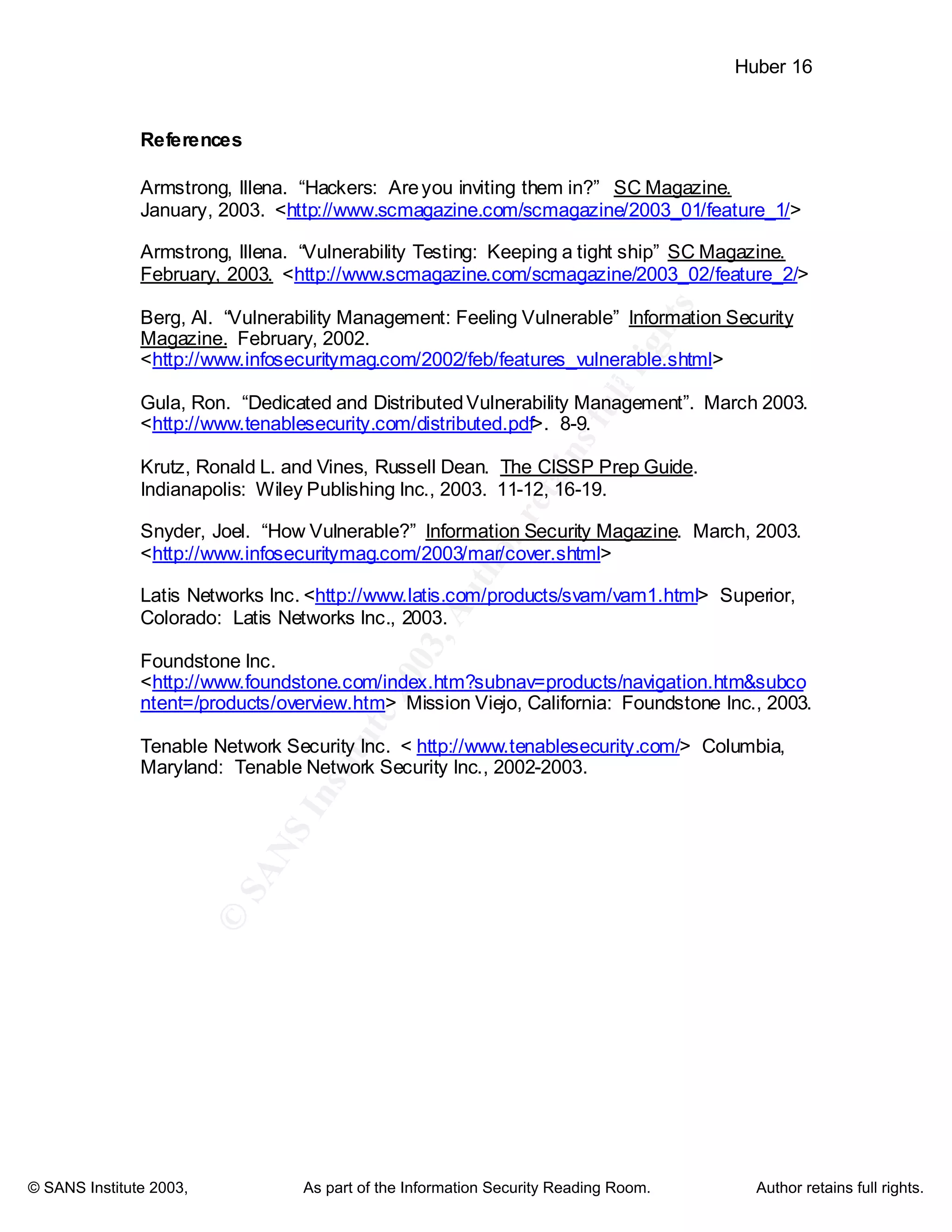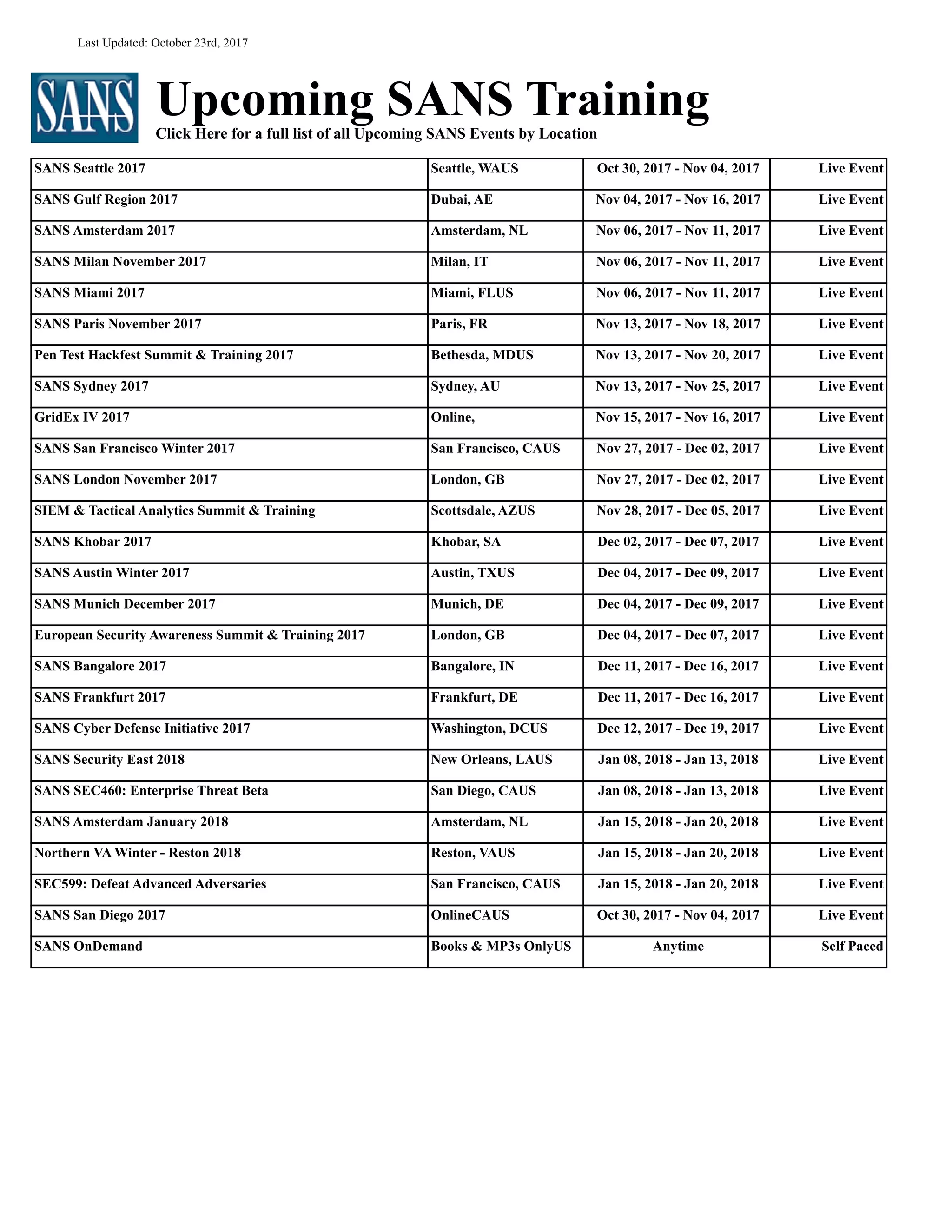This document discusses strategies for improving the effectiveness of vulnerability assessment programs in large organizations. It recommends improving communication about the program, using change and enterprise management processes, strategically placing network assessment tools, tuning vulnerability assessment policies, and automating assessments. It also discusses managing vulnerability assessment data through remediation, reporting, weighing risks, and verification processes. Finally, it reviews several new tools that take a full lifecycle approach to vulnerability management. Implementing these recommendations and tools can help vulnerability assessment programs provide more value by reducing their impact on resources and demonstrating real risk reduction.
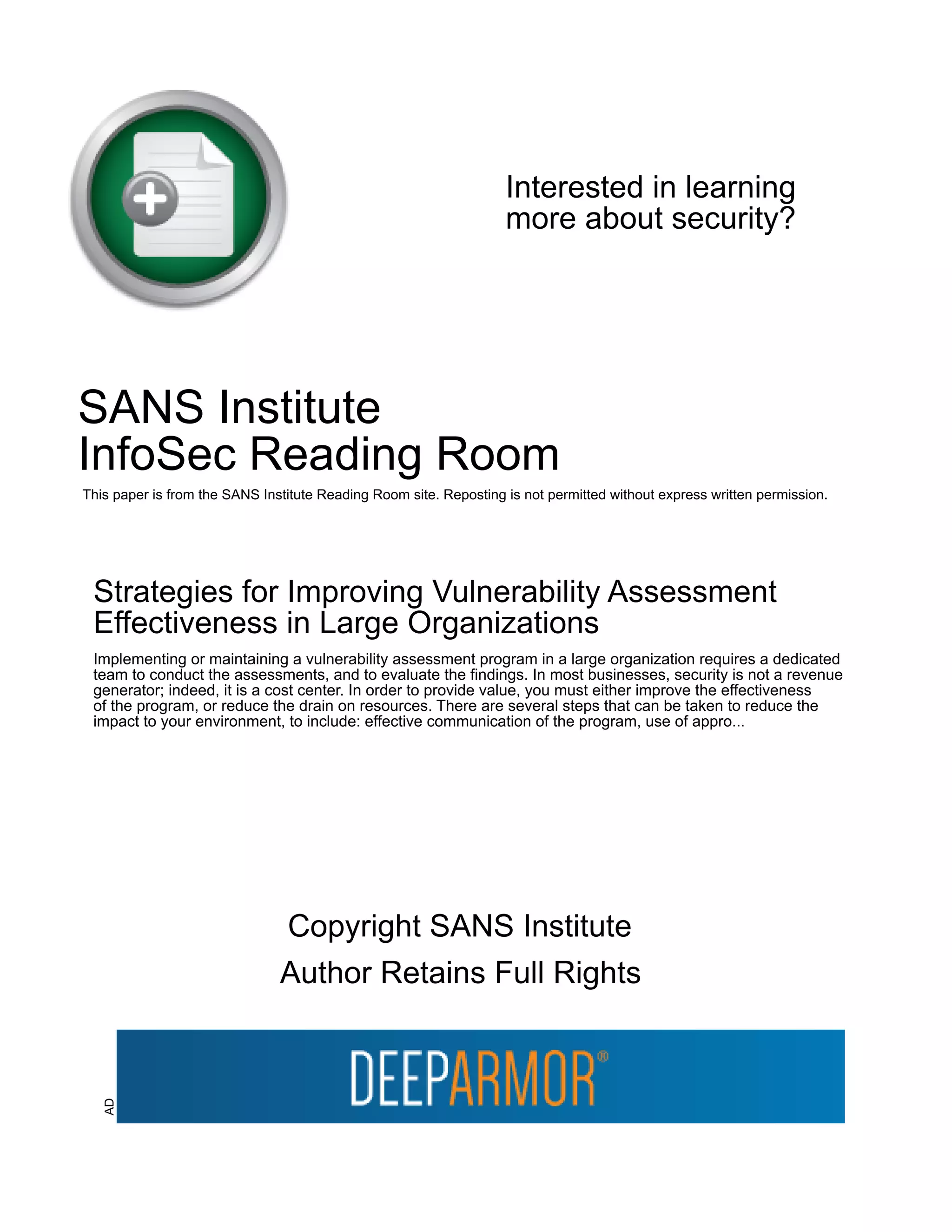
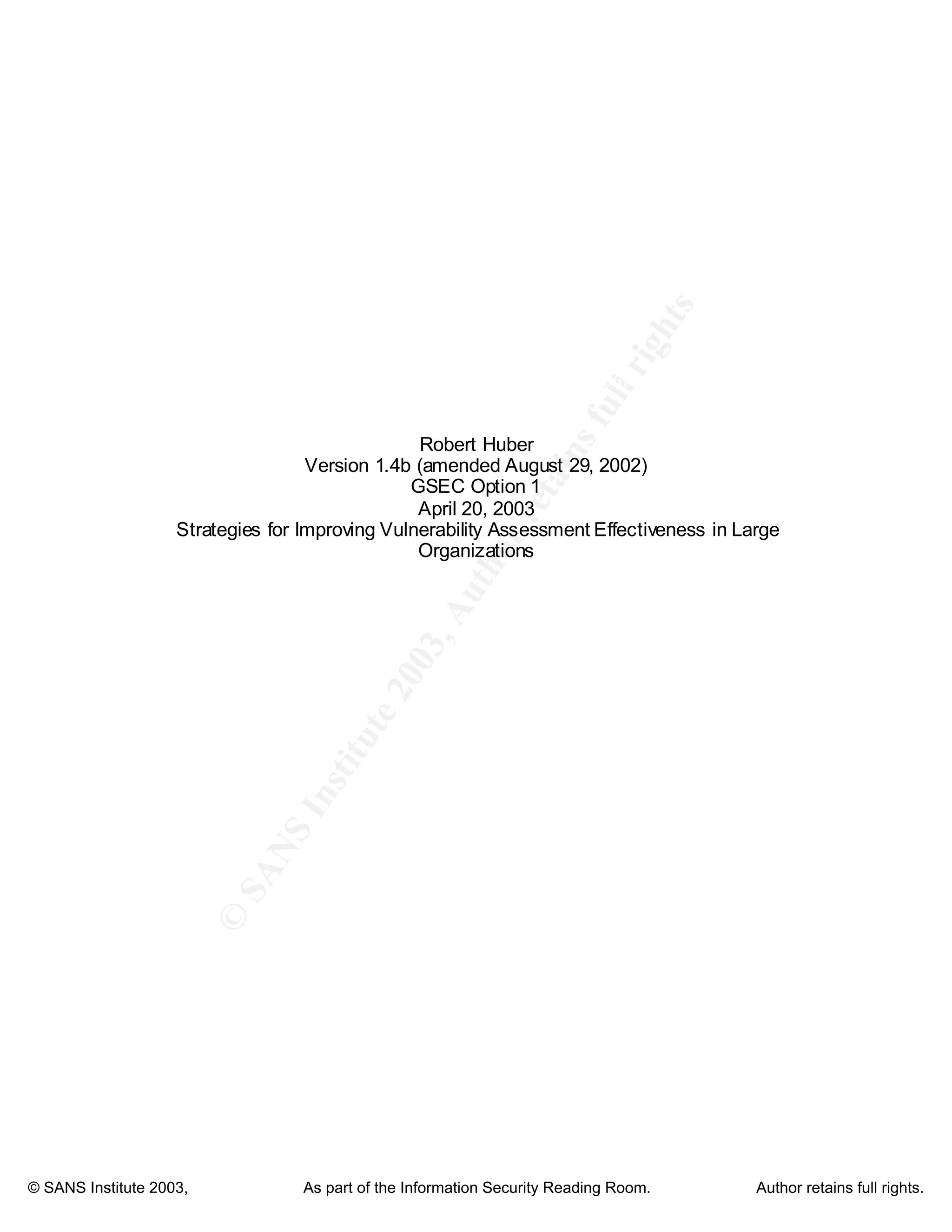
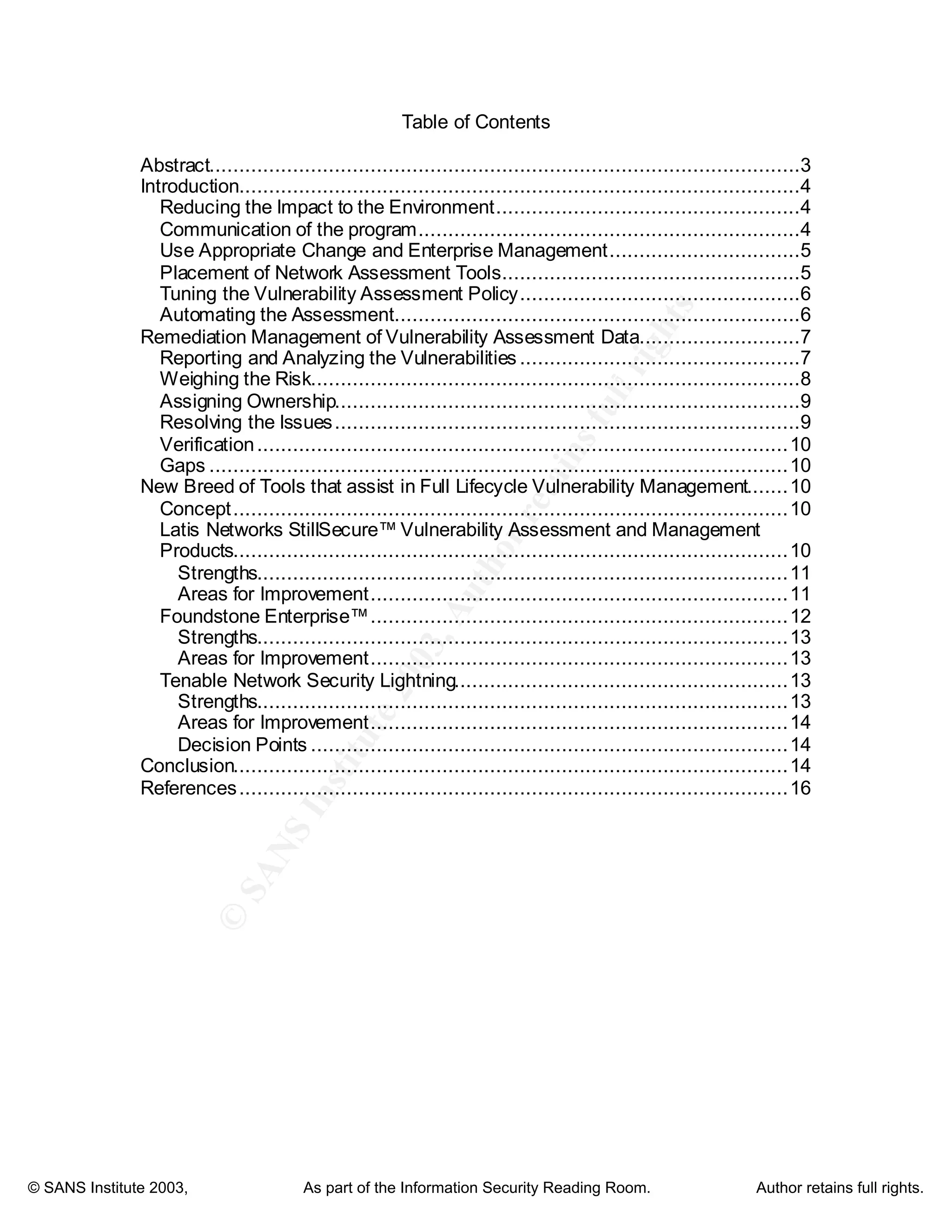
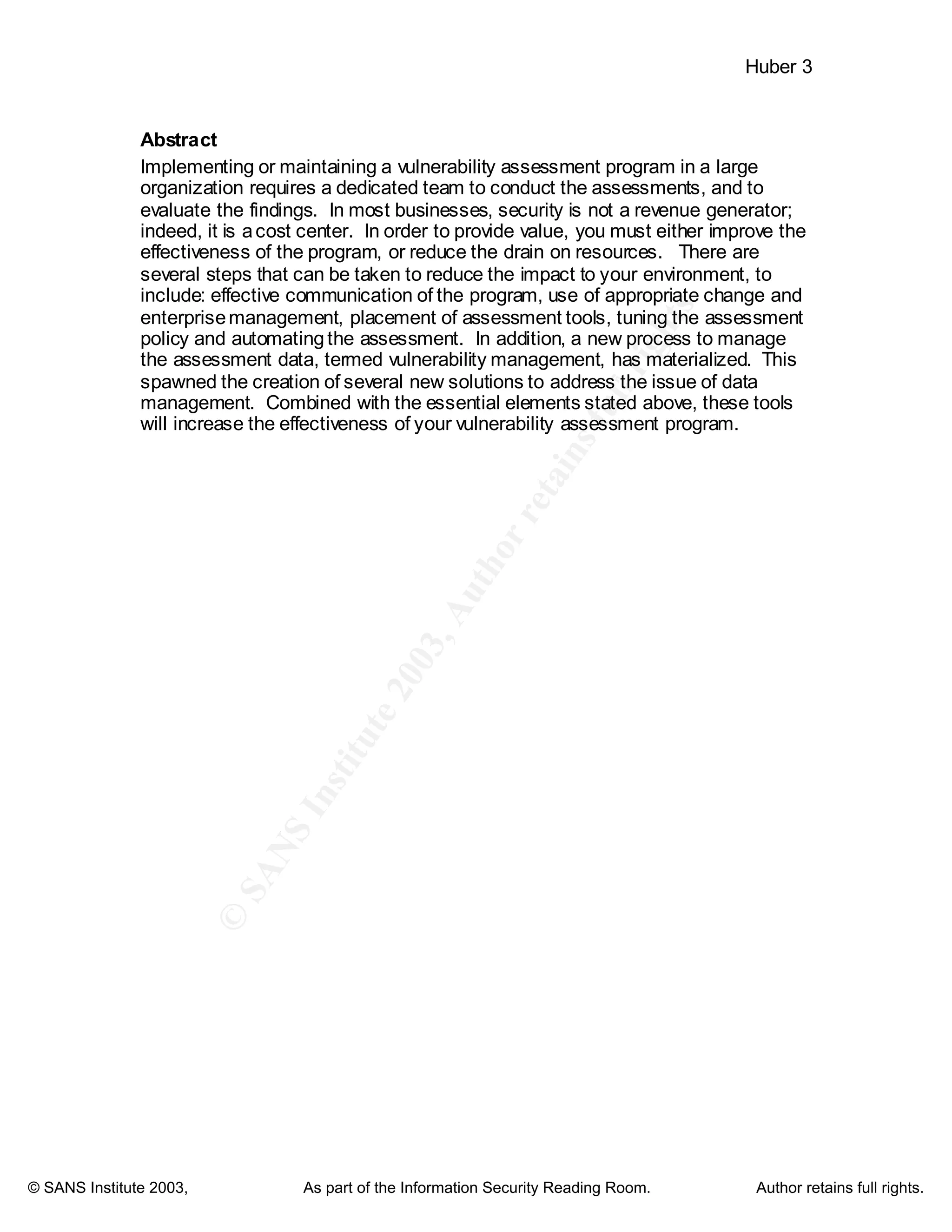
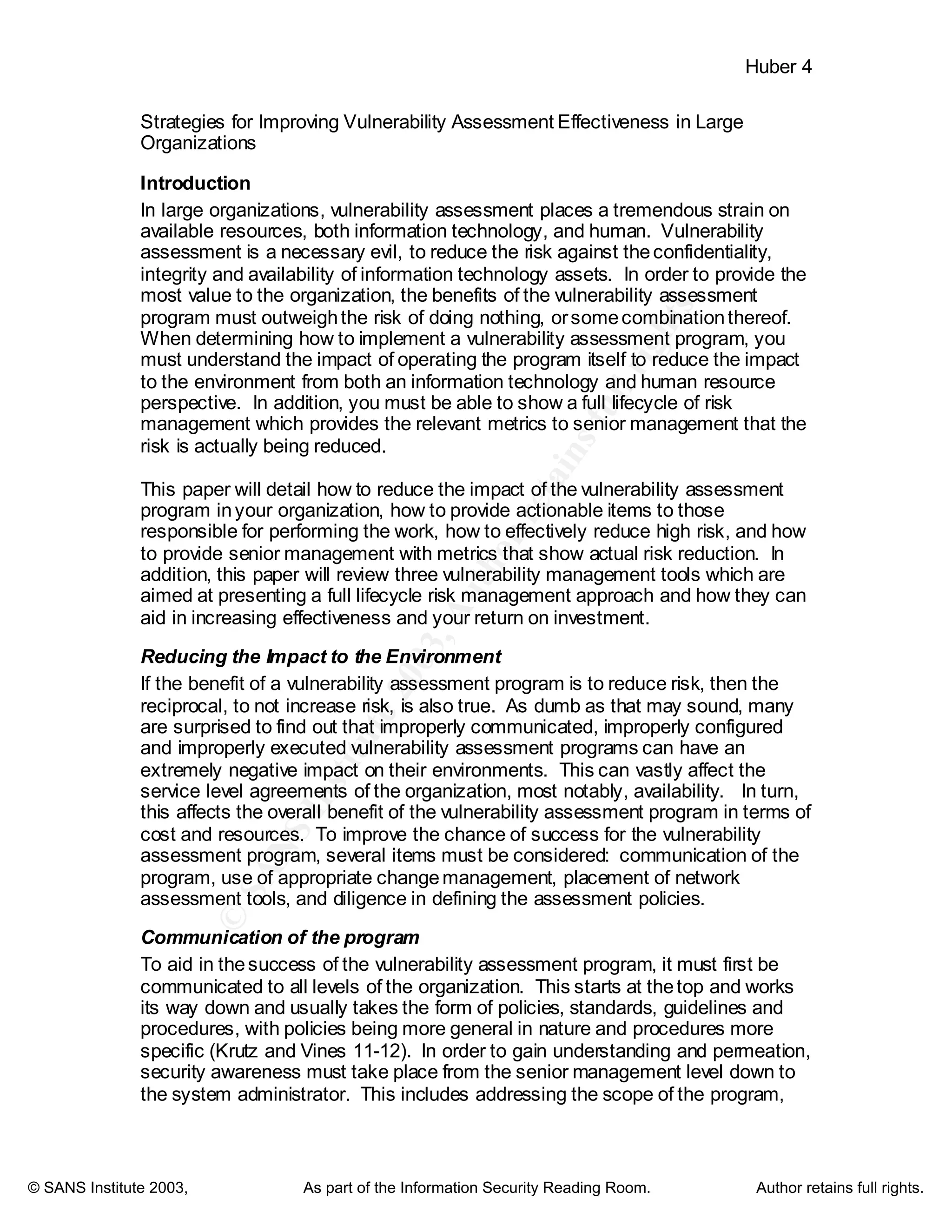
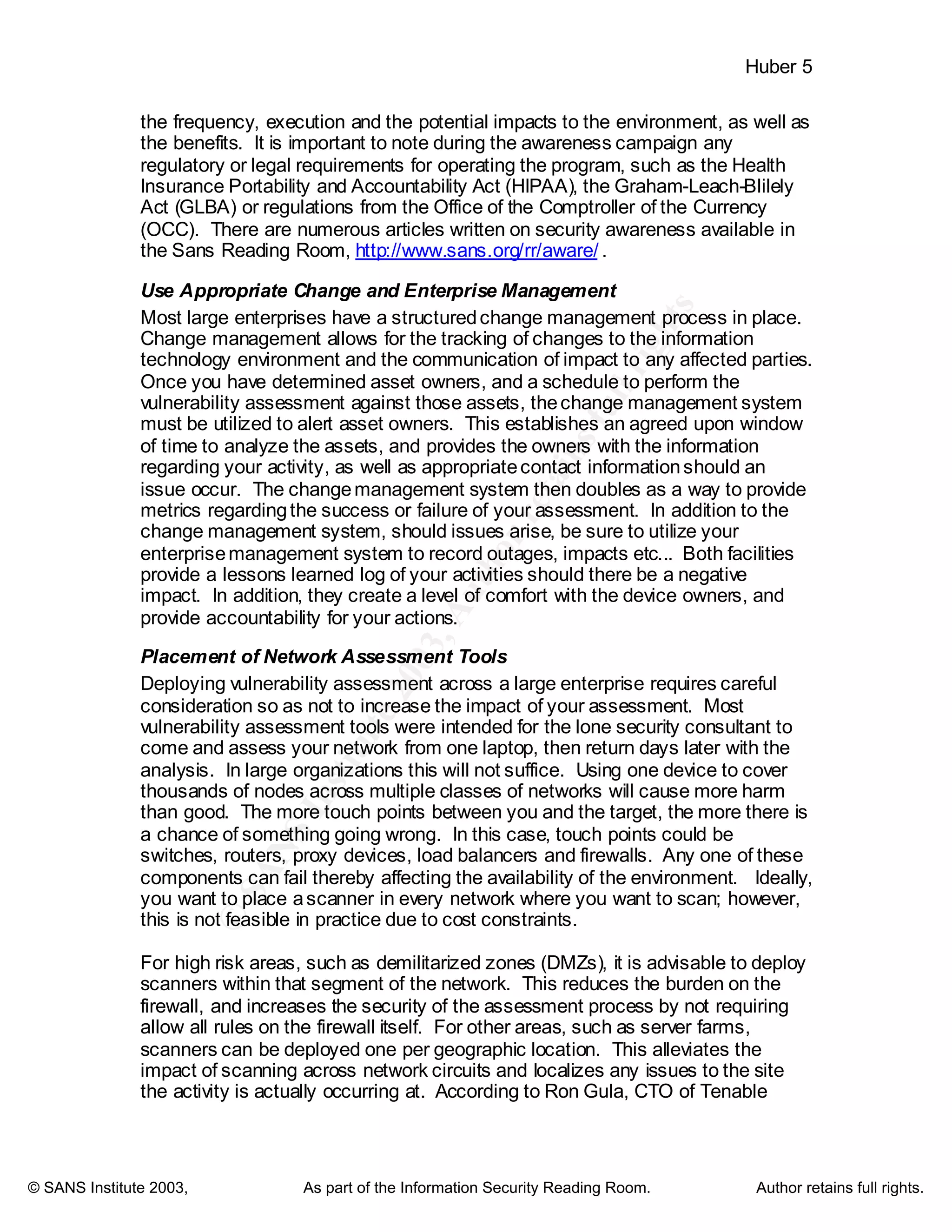
![©
SANSInstitute2003,Authorretainsfullrights
Key fingerprint = AF19 FA27 2F94 998D FDB5 DE3D F8B5 06E4 A169 4E46
Key fingerprint = AF19 FA27 2F94 998D FDB5 DE3D F8B5 06E4 A169 4E46
© SANS Institute 2003, As part of the Information Security Reading Room. Author retains full rights.
Huber 6
Network , “By placing the scanning agents closer to their target networks, the
port scans and other probes don’t flow across the core router and switching
fabric. This causes less network outages and performance degradation [. . .] “
(Gula 8) . This is the concept of distributed scanning.
Distributedscanning has many advantages as identified in Ron Gula’s
whitepaper, Dedicated and Distributed Vulnerability Management, “By distributing
the scan across many nodes, parallel scanningcan occur [. . .] splitting up the
effort can greatly reduce thetime it takes toscan a network “ (8). This also
allows the organization to quickly assess the risk posture of the network if a new
flaw is discovered. A perfect example would be the recent Slammer worm. In
order to quickly assess a large organization, distributed scanners were a must to
reduce the time and burden tocomplete thescan and provide the organization a
quick understanding of their exposure.
Tuning the Vulnerability Assessment Policy
Many assessment tools are very powerful and can wreak havoc onyour network
and assets. This necessitates the need to refine your policies to only look for
vulnerabilities which are relevant to your network, and which will not cause
outages when they are executed. This may mean turning off denial of services
(DoS) attacks, or attacks which are likely to cause a server outage. Some
scanners such as Nessus will tell you if the attack has a high probability of
causing an outage. According to Information Security magazine’s recent testing,
“Although most of theconfiguration [vulnerability] tools have options to disable
‘dangerous’ or ‘denial-of-service’ scanning, that isn't always sufficient tokeep
them up” (Snyder). If you feel it is absolutely necessary to test your devices
against these attacks then I suggest you perform them in a closed test
environment.
In addition totuning your policy to remove DoS attacks and those that may cause
an outage, it is alsosuggested that you run platform specific policies against
corresponding assets. This means creating a Windows 2000 Internet Information
Server (IIS) web policy and running it against corresponding assets. This
increases the efficiency of your assessment time, and alleviates unnecessary
network load. Obviously there is a balance whichmust be struck. You do not
want to create a policy for every combination of assets and softwareyou have,
but a few generic groupings by operatingsystem, as well as somethat correlate
to DMZ areas should be considered.
Automating theAssessment
The next step is to setup the schedule for the assessments. Based on your
environment, andthe criticality of the assets, you need to establish a recurring
assessment schedule. I have combed through dozens of documents on best
practice vulnerability assessment; nonetheless, I could not find any substantial
identification of timeframes for conducting assessments. Obviously, you should
frequent your higher risk areas more often. Even so, once you identify the](https://image.slidesharecdn.com/strategies-improving-vulnerability-assessment-effectiveness-large-organizations-1072-180208134929/75/Strategies-improving-vulnerability-assessment-effectiveness-large-organizations-1072-7-2048.jpg)
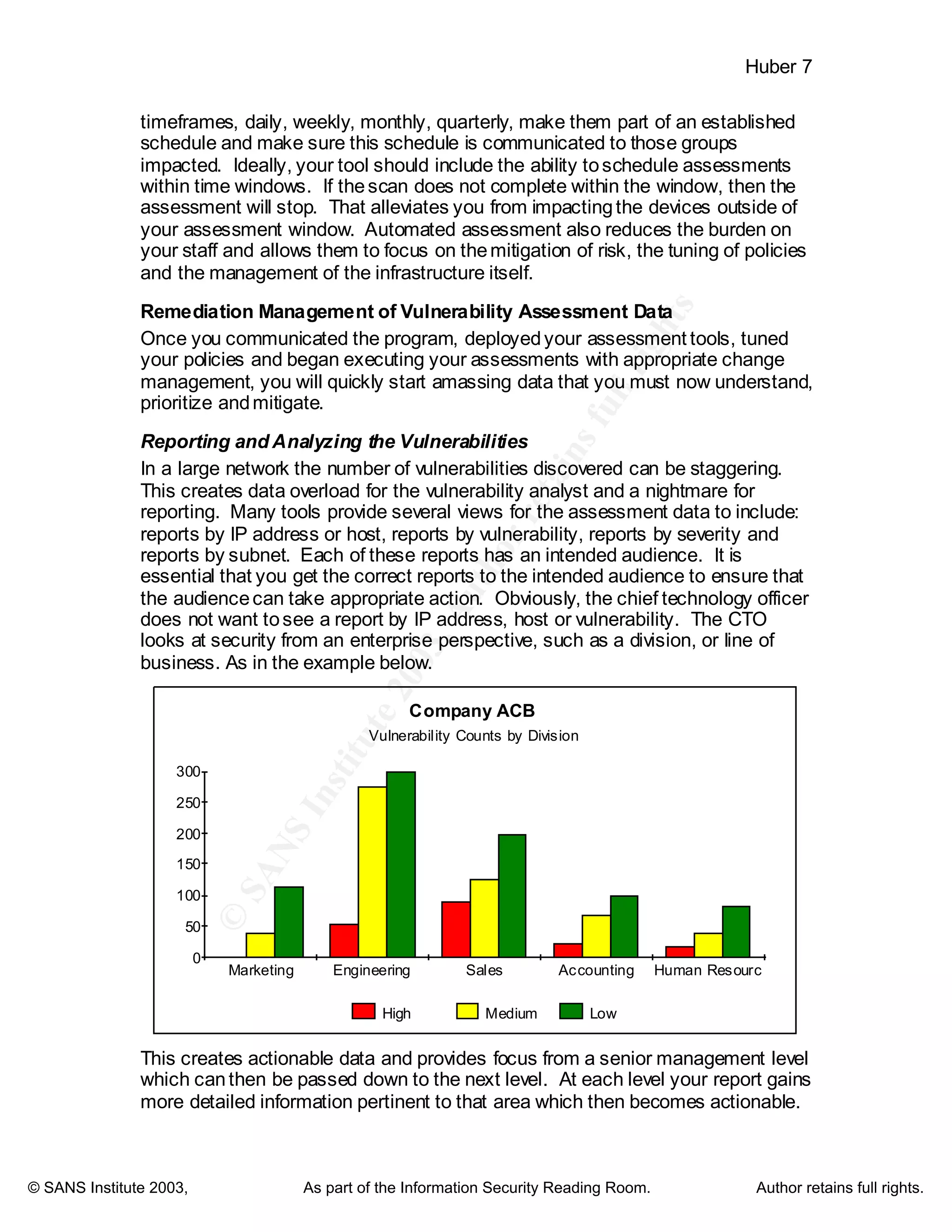
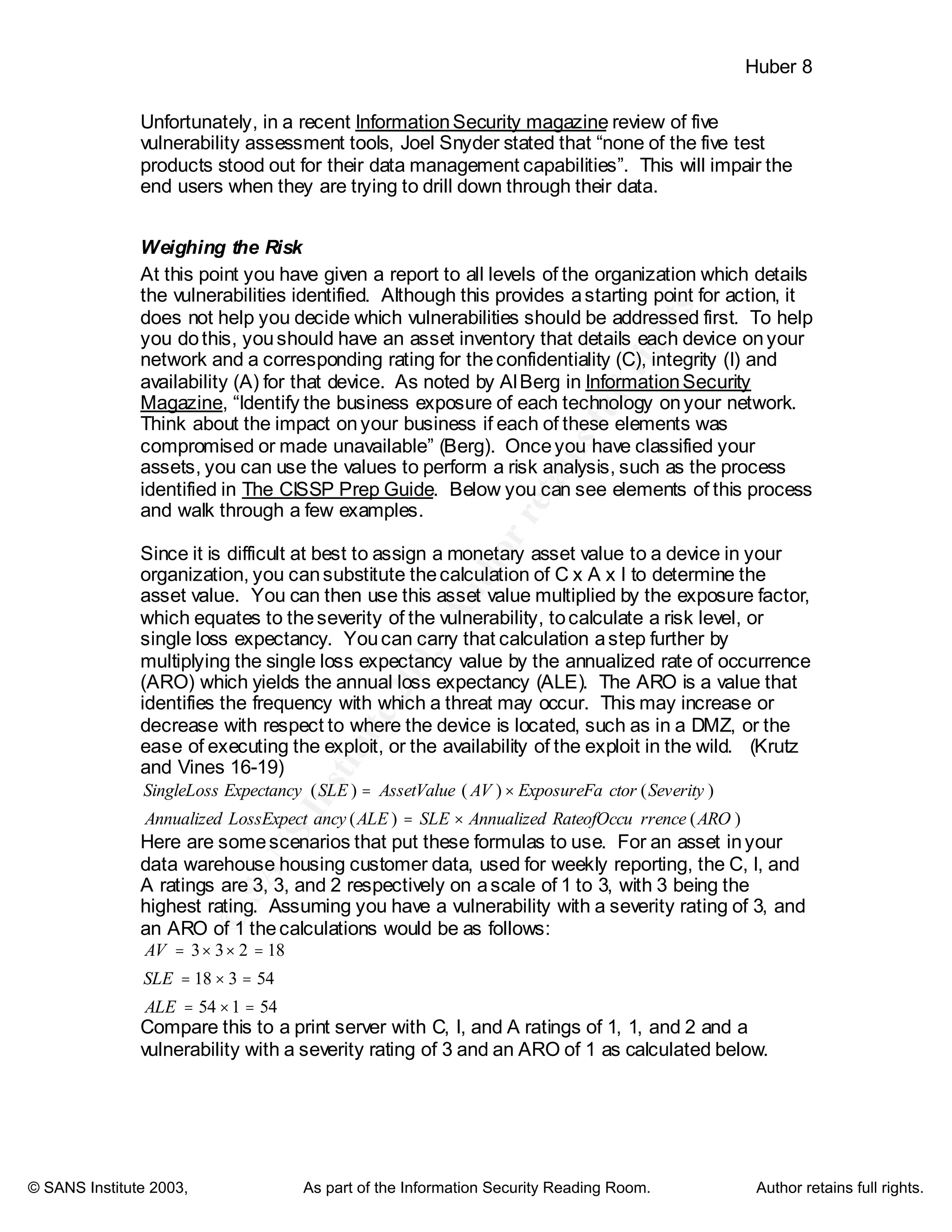
![©
SANSInstitute2003,Authorretainsfullrights
Key fingerprint = AF19 FA27 2F94 998D FDB5 DE3D F8B5 06E4 A169 4E46
Key fingerprint = AF19 FA27 2F94 998D FDB5 DE3D F8B5 06E4 A169 4E46
© SANS Institute 2003, As part of the Information Security Reading Room. Author retains full rights.
Huber 9
616
632
2211
=×=
=×=
=××=
ALE
SLE
AV
You can see how the device in the data warehouse has a higher ALE, as you
would expect. To see how the ARO affects the value, compare the above
examples to a web server located in a DMZ with C, I, A rating of 1, 3, 3 and
severity rating of 3 and an ARO of 3you get:
81327
2739
9331
=×=
=×=
=××=
ALE
SLE
AV
From the calculations performed above, it becomes evident that the device in the
DMZ has a higher ALE that the other internal devices, even though all three
devices have a high severity vulnerability. Armed with that information, the DMZ
device should beyour first area of concern.
Assigning Ownership
Once the vulnerabilities are identified and risk rated, they are then ready for
distribution to those responsible for mitigating the risk. Providing a report of the
vulnerabilities raises awareness and gives the system administrator a starting
point; however, it does not assign ownership. To assign ownership there must
be two items in place. First, is a policy orstandard that identifies a process for
mitigation. This policy should outline the roles and responsibilities for all parties
involved. This creates the ownership necessary to enforce compliance. Second,
a tool, or process to track the ownership is mandatory. This provides evidence of
the accountability, and can be reported to management.
Resolving the Issues
A tell tale statement by Foundstone CEO George Kurtz captured by Illena
Armstrong in SC Magazine states “The finding of the issues is half the equation -
the other half is getting them fixed” (qtd. in Armstrong
http://www.scmagazine.com/scmagazine/2003_01/feature_1/). If you have
hundreds of high risk vulnerabilities in your organization, you obviously cannot
address all of them immediately. This is where the value of weighing risk
becomes evident. It provides a means to allowyou to focus on the assets with
the highest risk first and provides a focus for the system administrator. One must
also be capable of tracking the status of a vulnerability from the opening, to the
closing of the issue. This allows for progress to be measured, and items to be
removed from the queue as they are mitigated. Providing the ability for the end
user to insert comments regarding progress is also essential. The comment
sectioncan later be used tocompare similar issues in the future, as well as an
area to document compensating controls, or identify other reasons for the issue
remaining open.
Keep in mind that all fixes must be channeled through your organization’s
change management process, “when reports [. . .] recommend certain](https://image.slidesharecdn.com/strategies-improving-vulnerability-assessment-effectiveness-large-organizations-1072-180208134929/75/Strategies-improving-vulnerability-assessment-effectiveness-large-organizations-1072-10-2048.jpg)
![©
SANSInstitute2003,Authorretainsfullrights
Key fingerprint = AF19 FA27 2F94 998D FDB5 DE3D F8B5 06E4 A169 4E46
Key fingerprint = AF19 FA27 2F94 998D FDB5 DE3D F8B5 06E4 A169 4E46
© SANS Institute 2003, As part of the Information Security Reading Room. Author retains full rights.
Huber 10
modifications to a system, thecompany should have a ‘change management
process’ in place that helps to assign duties, track their progress, inform on their
effects, note their completion and more [. . .]” (Armstrong
http://www.scmagazine.com/scmagazine/2003_02/feature_2/).
Verification
The last important piece of the vulnerability management process is to verify that
a risk has actually beenmitigated. Ideally the end user should be able to perform
the verificationscan against the specific issue, and once it is confirmed, then it
can be passed to the security team for further verification and closure. Tools
such as Nessus allow you to run a differences report against the previous scan to
determine any changes, such as issues being mitigated. A report of the
mitigated items is the real value that you provide to management. This lets them
know exactly what issues have been addressed, and what progress has been
made. These reports can then be used to calculate a return on investment when
compared to potential losses.
Gaps
All of the above mentioned facets of vulnerability management are ideal
requirements for any tool selection youmay be contemplating. Unfortunately,
most tools do not allow for varying levels of reports, from executives to system
administrators. Nor do most of them allow you to weigh the risk by
confidentiality, integrity or availability of the asset. Most do not allowyou to track
the ownership. Add to that, most tools do not allowyou to followthe remediation
lifecycle process toclosure. Most organizations end up building homegrown
solutions to address many of these shortcomings. This development effort
detracts from the real mission of managing risk; hence, a new revolution of
vulnerability management solutions gives rise.
New Breed of Tools thatassist in Full Lifecycle Vulnerability Management
Concept
These new solutions lay aside the term of vulnerability assessment, and replace
assessment with a term that implies more of a process, management. Also, the
new solutions give way to enterprise wide scale, alas the fact that a single
scanner is no longer sufficient for a large organization. In addition, these tools
focus on the management of risk, that is, the identification, the weighing of risk,
assigning ownership, tracking issues toclosure and verifying thechanges. Let’s
take a look at three of these solutions: 1). Latis StillSecure VAM, 2).
Foundstone Enterprise, and 3). Tenable Network Security Lightning.
Latis Networks StillSecure™ VulnerabilityAssessment and Management
Products
As the name implies, Latis has taken a risk lifecycle management approach. As
stated in their literature, “The VAM family of Vulnerability Assessment and
Management products identify, track, and manage the repair of vulnerabilities . .](https://image.slidesharecdn.com/strategies-improving-vulnerability-assessment-effectiveness-large-organizations-1072-180208134929/75/Strategies-improving-vulnerability-assessment-effectiveness-large-organizations-1072-11-2048.jpg)

